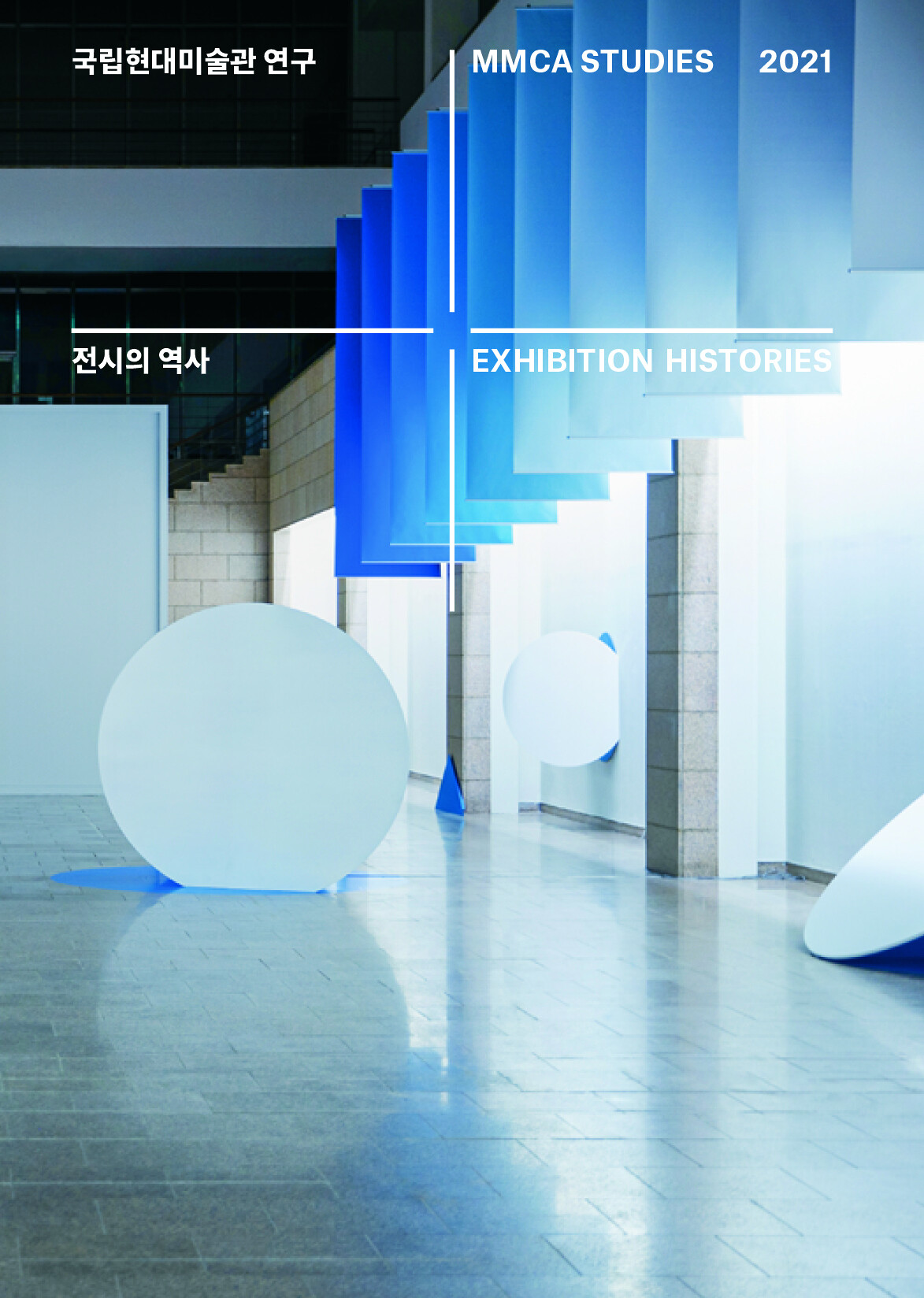30 Samcheong-ro, Jongno-gu
03062 Seoul
South Korea
Hours: Monday–Sunday 10am–6pm,
Wednesday and Saturday 10am–9pm
T +82 2 3701 9500
Research into “exhibition histories” is still a new phenomenon. The very name hints at a multiplicity of histories, and the drawing of parallels between exhibitions across different times and places. The 2021 edition of MMCA Studies is a special issue focusing on the history of exhibitions. It adopts a strategy of parallel and overlapping observation to offer a three-dimensional record of “centers” that have been constantly diversifying and in flux in a contemporary art environment that has become standardized under the influences of globalism. This is a new methodology of analyzing exhibitions that is no longer limited to certain regional or historical divisions. It undertakes an examination of the exhibitions that provided the “soil,” in an attempt to identify their inner operating principles and the mutual interconnections of exhibitions that proceeded along parallel paths within different institutions.
The special issue consists of contextualization based on practical examples. Biljana Ciric is sharing her experiences of an archive exhibition encapsulating the 30-year history of the Shanghai art world, and proposes an alternative approach to art history, which has historically been driven by a select few mainstream figures. In its place, she suggests collecting and contextualizing “peripheral” narratives, such as archival materials related to self-organization activities by artists themselves. Lee Youngchul, who was the curator of the early Gwangju Biennale, Busan Biennale and Seoul Mediacity Biennale, revisits such events and considers some curatorial propositions that had to be applied. He continues proposing that curatorial practice should be predicated on an ethical attitude, in which the curator’s thinking and actions are in sync.
In the roundtable “Pandemic, Museum, Exhibition Discourses,” four curators from Korean national and public art museums explore connections between their most recent exhibitions from a perspective of exhibition histories: mapping the themes of the exhibitions; the relationship of influence between the pandemic and exhibitions; ecological and environmental issues; and experiences with digital settings.
The special issue also explores how MMCA’s exhibition histories can be newly contextualized in a way that avoids the existing linearity and sociopolitical relationships of influence. Art critic Jung Hyun considers Where Are We? (1995) and The Modern Korea Rediscovered (2008–09) as examples reflecting the fact that Korea is still experiencing a gulf between phenomena and ideas in its acceptance of modern concepts. Contemporary art researcher Jang Seung-yeon presents an in-depth analysis of the annual Young Korean Artists ushered in 1981, examining the ways in which museums have documented exhibitions and suggesting that exhibitions should gain a new identity as “experiences.” MMCA curator Lee Sooyon, through analyzing Nam June Paik ∙Video Time ∙Video Space (1992), observes the global cultural influences in the exhibition’s art, catalogue, and symposium. Kim Yongju uses recent examples of MMCA exhibitions to analyze the role of exhibition design, which underwent transformations with the advent of the white cube.
The contexts that are being created for the exhibition of contemporary art are changing, including the juxtaposition of art created in different times and places and the creation of forums for direct discourse and exchange between artists. This is a moment that calls for follow-up studies and joint research, so that the multiple perspectives have the opportunity to intersect.
Contributions by Biljana Ciric, Lee Youngchul, Kim Yujin, Song Kahyun, Cha Seungjoo, Tiffany Yeon Chae, Choi Sangho, Jung Hyun, Jang Seung-yeon, Lee Sooyon, Kim Yongju, Park Mihwa, Lee Sabine, and Hwang Jiyoung
Edited by Tiffany Yeon Chae.


